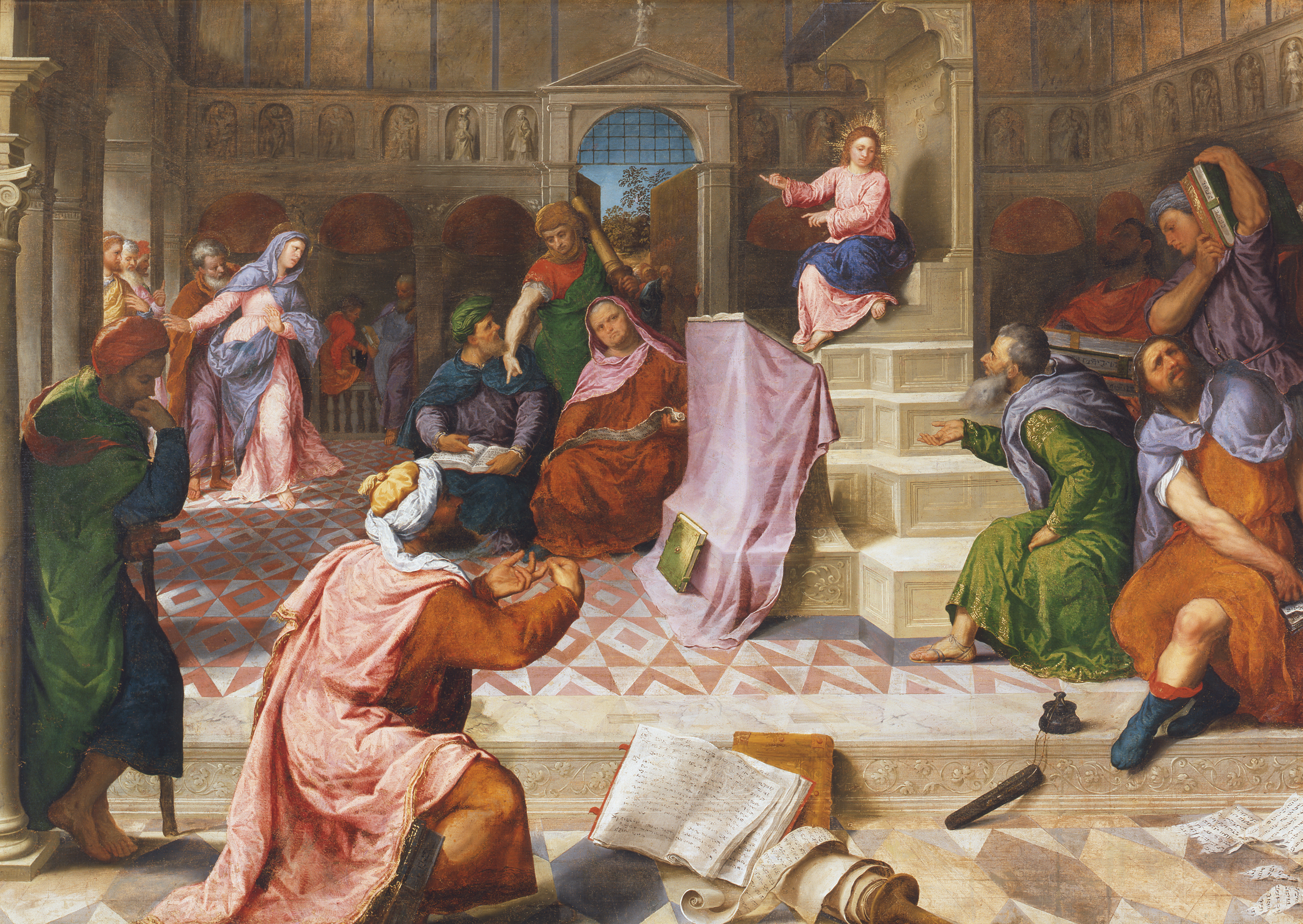
The Annunciation, ca.1540
This Venetian Master, relatively uncommon from the Renaissance, was born in July 5, 1500 in Treviso. Having studied under Titian, his style seems to fuse the Renaissance with Venetian color and heavy Mannerist influence. We often hear plenty about Titian, Veronese, Tintoretto, and even Tiepolo, but Bordone is the kind of artist you find out about only in art history classes or, better yet, in a museum. And his style is definitely worth discovering.
The deep earth tones and dramatic light of Titian are immediately evident, but what really makes Bordone unique is his composition and anatomy, more specifically, how he used them together to make paintings with a definite style that deserves attention. Where Titian became more loose in his later years, and Tintoretto painted fast and furious, and Veronese big and colorful, Bordone paints with specific attention to detail and skin tones in a way that is more pure somehow. He may have lacked the psychological insight for portraiture that his contemporaries had, but in large compositional pieces with multiple figures he pushed the envelope in ways that even they could not.
Look at the deep perspective of the buildings in the painting above— I can't think of any other artist who even came close to conceiving such a composition. Off to the right is the Virgin Mary receiving the news from the angel Gabriel on the far left, off in the distance. Although Mary appears a little awkward here, with the way her hands appear too large, the facial expression is real and the Venetian influence on the colorful robe is obvious. Note the green drapery above her wrapped around the columns. Bordone takes a very common theme and makes it distinctly Venetian...compare with other versions here.

Christ Disputing in the Temple, ca. 1545
Here again note the unique use of space. It feels circular. Bold Venetian colors with very Mannerist figures that all look in specific directions, helping to lead our eye around the painting. Here the architectural details are more impressionistic but the feeling of space, with warm shadows in the background help to enhance the foreground figures and their bright colours.

Study for Nude from 1500's

A Pair of Lovers, ca.1540
Mannerist anatomy that looks a bit stiff here also harmonizes with the warm background and highly accurate flesh tones. A very unusual theme, I don't know the history behind this painting but I assume it was commissioned by someone wealthy. It is surprisingly modern for the 1500's! It is the kind of painting to see in person...viewing online here seems to dull the experience.

Presentation of the Ring to the Doges of Venice, 1534
Bordone seems to outdo himself again here from the Annunciation painting above. Now the figures and the architecture are in one-point perspective, with deeper shadows and his distinct colors. I love the young boy on the step alone, looking to the figures on the left...what a brilliant way to slow down the formality of the composition and the scene unfolding. Bordone expresses extreme pride in his Venetian heritage, which includes an inherent gift for group compositions and individual figures that would echo later on in Veronese and Tintoretto, but Bordone deserves a place as an important Venetian painter.
Comments
Post a Comment